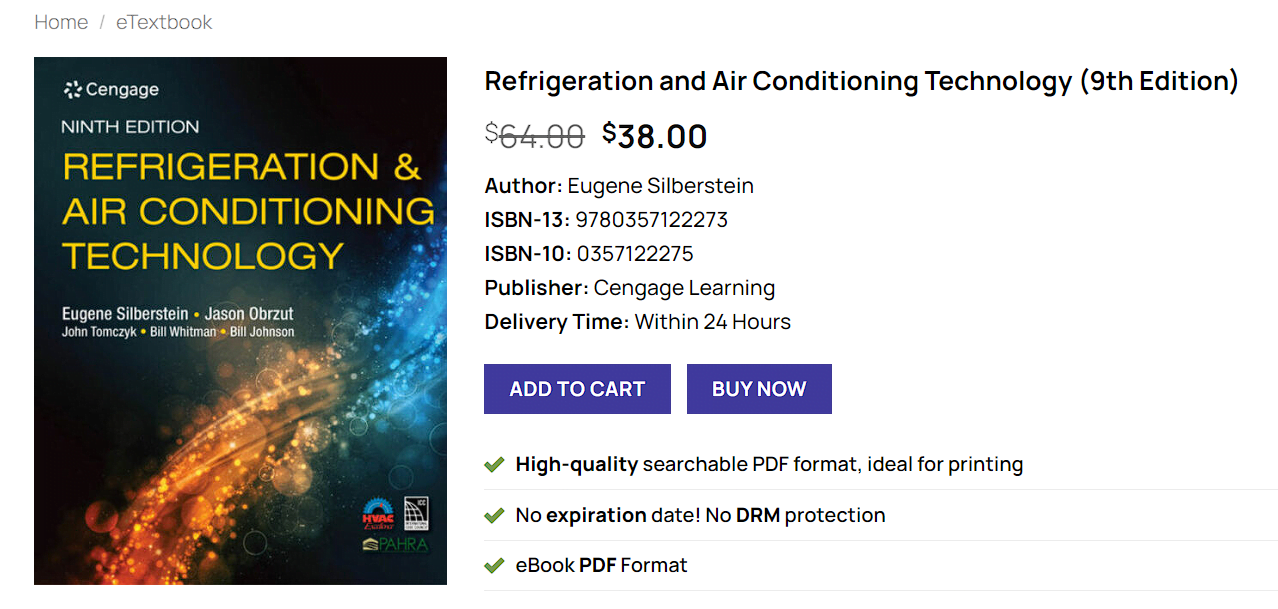Refrigeration and Air Conditioning Technology 9th Edition serves as a cornerstone for those venturing into the HVAC (Heating, Ventilation, and Air Conditioning) industry. This comprehensive guide offers an in-depth exploration of the key concepts and principles essential for understanding and excelling in this field. At its core, the book delves into the fundamentals of thermodynamics, heat transfer, and the refrigeration cycle, providing a strong foundation for students and professionals alike.
Understanding the basics of thermodynamics is crucial. Thermodynamics deals with the principles of heat and energy transfer, which are pivotal in the design and operation of refrigeration and air conditioning systems. Heat transfer, another fundamental topic, explains the mechanisms by which heat moves from one place to another—a concept that is integral to the functioning of HVAC systems.
The refrigeration cycle, often considered the heart of refrigeration and air conditioning technology, is thoroughly covered. This cycle describes the process through which heat is extracted from a space to provide cooling. By grasping these essentials, students can better comprehend more complex topics and practical applications within the HVAC industry.
The relevance of the 9th edition in modern HVAC education cannot be overstated. It equips students with the knowledge needed to tackle real-world challenges, ensuring they are well-prepared for their careers. The book’s updated content reflects the latest advancements in technology and industry standards, making it a valuable resource for both learning and reference.
A brief history of refrigeration and air conditioning technology reveals a field that has evolved significantly over the years. From the early days of ice harvesting to the development of mechanical refrigeration and modern air conditioning systems, the journey highlights remarkable technological advancements. This historical context enriches the reader’s understanding and appreciation of how far the industry has come.
In summary, the 9th edition of Refrigeration and Air Conditioning Technology is an indispensable resource for anyone pursuing a career in HVAC. Its thorough coverage of essential concepts and its alignment with current industry practices make it a vital tool for both education and professional development.
Key Concepts and Principles in Refrigeration and Air Conditioning Technology
The 9th edition of “Refrigeration and Air Conditioning Technology” delves deeply into the essential concepts and principles that form the backbone of HVAC systems. At the heart of these systems lies the refrigeration cycle, a process fundamental to both refrigeration and air conditioning. This cycle involves four primary stages: evaporation, compression, condensation, and expansion. Each stage plays a critical role in the transfer of heat, facilitating the cooling process.
The topic of refrigerants is another pivotal area discussed in the book. Refrigerants are the substances used to absorb and release heat, and their types can significantly impact system efficiency and environmental footprint. The 9th edition addresses the evolution of refrigerants, highlighting the shift towards more eco-friendly options, in line with contemporary environmental regulations.
Heat transfer principles are also thoroughly examined. Understanding conduction, convection, and radiation is essential for troubleshooting and optimizing HVAC systems. Superheating and subcooling are two critical concepts in this context. Superheating refers to the temperature increase of the refrigerant vapor above its boiling point, while subcooling denotes the cooling of the liquid refrigerant below its condensing temperature. Both are crucial for ensuring system efficiency and preventing compressor damage.
The components of refrigeration and air conditioning systems are meticulously detailed. Compressors, which increase the pressure of the refrigerant, are vital for maintaining the cycle. Condensers, which release absorbed heat to the surroundings, and evaporators, which absorb heat from the environment, are equally important. Expansion devices, such as thermostatic expansion valves or capillary tubes, control the refrigerant flow into the evaporator, ensuring optimal performance.
Significant updates in the 9th edition include advancements in system design and control technologies, reflecting the latest industry standards and practices. These advancements encompass improved energy efficiency, integration of smart controls, and the adoption of variable refrigerant flow (VRF) systems, which offer enhanced flexibility and efficiency.
By understanding these foundational concepts of Refrigeration and Air Conditioning Technology 9th Edition and principles, readers can gain a comprehensive insight into the complexities of refrigeration and air conditioning technology, equipping them with the knowledge necessary for practical application and system optimization.

